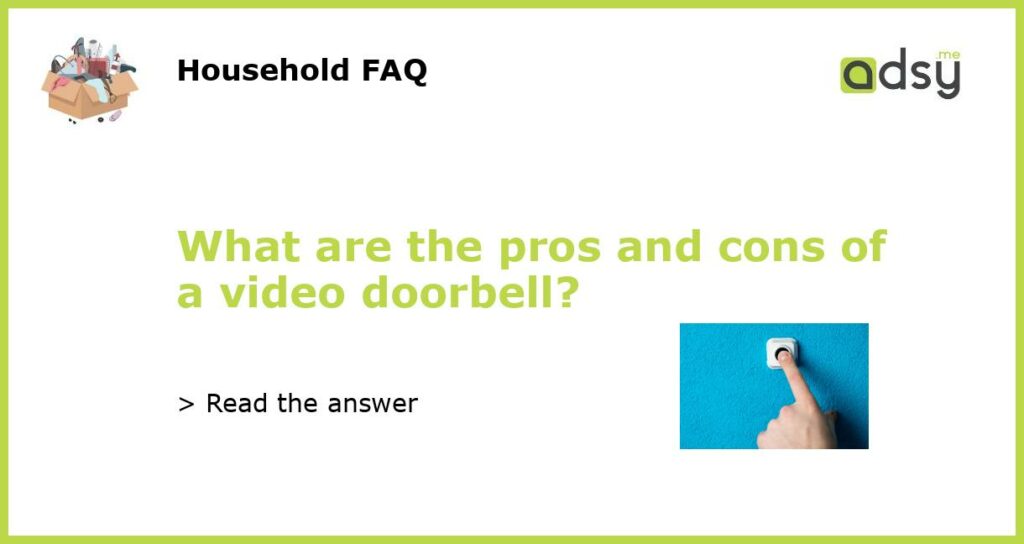Pros and Cons of Video Doorbells
Video doorbells have gained popularity in recent years as a convenient and innovative way to improve home security. With features like two-way audio, motion detection, and live video streaming, video doorbells offer a range of benefits. However, like any technology, there are also downsides to consider. In this article, we will explore the pros and cons of video doorbells to help you make an informed decision about whether or not to invest in this smart home device.
Pros of Video Doorbells
1. Enhanced Home Security: One of the primary benefits of video doorbells is the increased security they provide. With live video streaming and motion detection, you can monitor who is at your front door from anywhere, anytime. This can help deter potential burglars and provide evidence in case of a break-in.
2. Remote Access: Video doorbells offer the convenience of remote access, allowing you to see and speak to visitors or delivery personnel even when you are not at home. This feature can be especially useful when you are traveling or at work, giving you peace of mind and the ability to control access to your home.
3. Package Theft Prevention: Package theft is a growing concern, especially with the rise of online shopping. Video doorbells can help prevent package theft by allowing you to receive notifications when a package is delivered and by providing video evidence of any suspicious activity.
4. Easy Installation: Another advantage of video doorbells is their easy installation process. Most video doorbells are wireless and can be easily mounted on your existing doorbell or door frame. This means you don’t need to hire a professional to install the device, saving you time and money.
5. Integration with Smart Home Systems: Many video doorbell models are compatible with popular smart home systems, such as Amazon Alexa or Google Assistant. This integration allows you to control your video doorbell using voice commands and to incorporate it into your existing smart home automation setup for enhanced convenience.
Cons of Video Doorbells
1. Privacy Concerns: One of the main concerns with video doorbells is the potential invasion of privacy. As video doorbells capture footage of your front door and the immediate surroundings, there is a risk that your neighbors or passersby could be unintentionally recorded. To address this, some video doorbells offer privacy features, allowing you to limit the areas that are monitored.
2. Internet Connectivity: Video doorbells rely on a stable internet connection to function properly. If your internet goes down or experiences disruptions, you may not receive notifications or be able to access live video feeds. This can be a drawback if you live in an area with unreliable internet or frequent power outages.
3. Limited Field of View: While video doorbells provide a view of your front doorstep, the field of view can be limited. Depending on the model, you may not be able to see a wide area, such as the street or driveway. This could potentially limit the effectiveness of the device in capturing important details during an incident.
4. Cost: Video doorbells can be more expensive compared to traditional doorbells. In addition to the initial cost of the device, you may also need to pay for a monthly subscription fee to access advanced features, such as cloud storage or extended video history. It’s important to consider your budget and compare different models before making a purchase.
5. False Alarms: Motion detection technology in video doorbells can sometimes result in false alarms. Factors like passing cars, swaying trees, or small animals can trigger motion alerts, leading to unnecessary notifications. While some video doorbells offer adjustable sensitivity settings, false alarms can still be a source of frustration for users.






